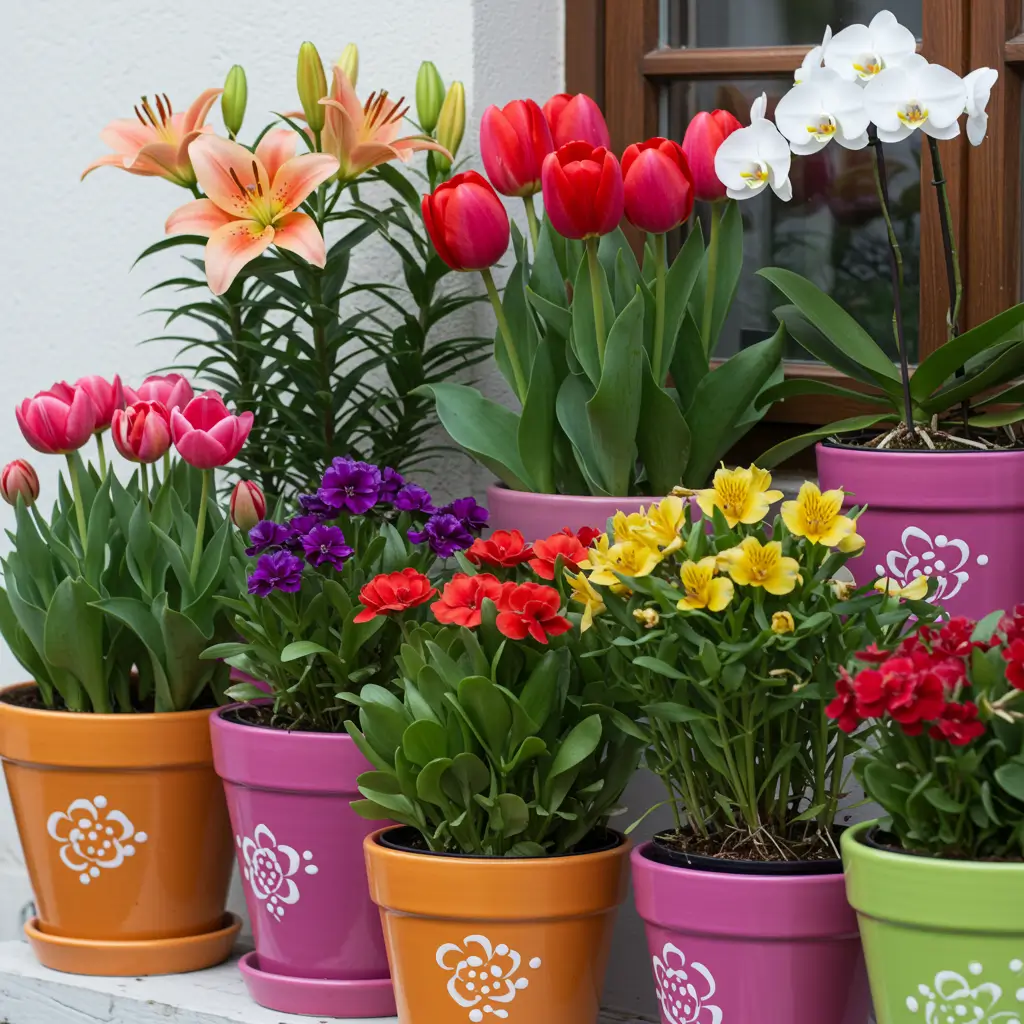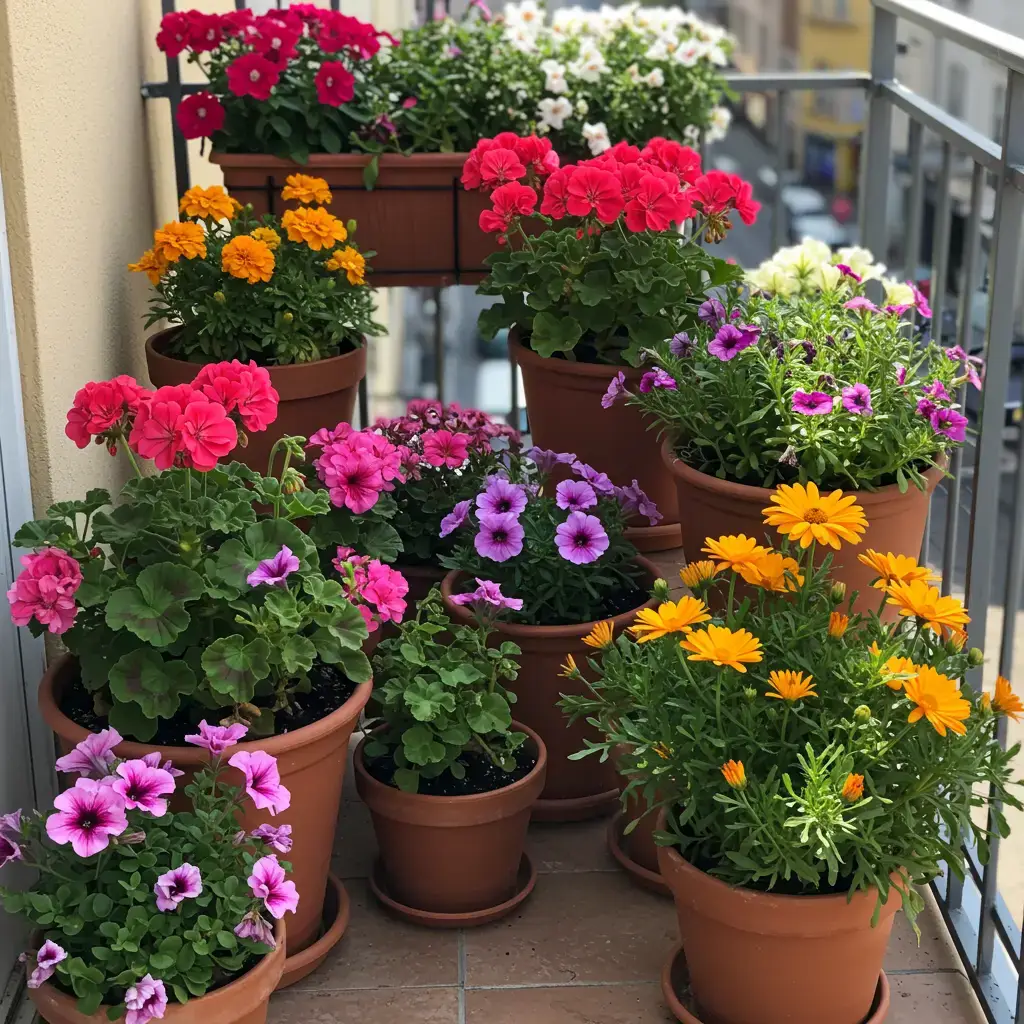Hummingbirds are some of the most delightful visitors to any garden. Their iridescent feathers and rapid wingbeats make them a joy to watch. If you want to attract these tiny, energetic birds to your space, growing hummingbird flowers in pots is a fantastic way to do it. Whether you have a sprawling garden or a small balcony, container gardening allows you to create a hummingbird-friendly oasis. In this guide, we’ll walk you through everything you need to know about planting and caring for hummingbird flowers in pots.
Why Grow Hummingbird Flowers in Pots?
Benefits of Container Gardening for Hummingbirds
Growing hummingbird flowers in pots is ideal for gardeners with limited space. Containers allow you to place flowers on balconies, patios, or even windowsills. Plus, you can easily move pots to optimize sunlight exposure or protect plants from harsh weather. Container gardening also gives you control over soil quality and drainage, ensuring your hummingbird flowers thrive.
Best Hummingbird Flowers for Pots
Not all flowers are created equal when it comes to attracting hummingbirds. These birds are drawn to bright, tubular flowers that are rich in nectar. Some of the best options for pots include:
- Trumpet Vine: Known for its vibrant orange blooms.
- Salvia: Produces long-lasting, nectar-rich flowers.
- Fuchsia: Hanging varieties are perfect for pots.
- Petunia: Easy to grow and available in hummingbird-favorite colors like red and purple.
- Lantana: A hardy plant that blooms all summer.
How Hummingbirds Help Your Garden
Hummingbirds aren’t just beautiful to watch—they’re also great for your garden. As they feed on nectar, they pollinate flowers, helping your plants reproduce. Additionally, hummingbirds eat small insects like aphids, providing natural pest control.
How to Plant Hummingbird Flowers in Pots

Choosing the Right Pots and Soil
The first step to growing hummingbird flowers in pots is selecting the right containers. Choose pots with drainage holes to prevent waterlogging. Terracotta pots are a great option because they’re breathable, but plastic pots are lightweight and easy to move.
For soil, use a well-draining potting mix enriched with organic matter. Hummingbird flowers thrive in soil that retains moisture without becoming soggy. You can also add perlite or sand to improve drainage.
Step-by-Step Planting Guide
- Prepare the Pot: Fill the container about two-thirds full with potting mix.
- Plant the Flowers: Gently remove the plant from its nursery pot and place it in the container. Add soil around the roots, leaving about an inch of space at the top for watering.
- Water Thoroughly: After planting, water the flowers to help them settle in.
- Add Mulch: A layer of mulch can help retain moisture and regulate soil temperature.
Best Locations for Potted Hummingbird Flowers
Hummingbird flowers need plenty of sunlight to bloom. Most varieties require at least 6 hours of direct sunlight daily. Place your pots in a sunny spot, such as a south-facing balcony or patio. If you live in a hot climate, consider providing afternoon shade to prevent the plants from wilting.
Read More :
Caring for Hummingbird Flowers in Pots
Watering Tips for Healthy Blooms
Proper watering is crucial for hummingbird flowers. Keep the soil consistently moist but not waterlogged. Check the soil daily during hot weather—if the top inch feels dry, it’s time to water. Self-watering pots can be a great investment if you’re often busy.
Fertilizing for Continuous Blooms
To keep your hummingbird flowers blooming all season, fertilize them regularly. Use a balanced, water-soluble fertilizer every 2-4 weeks. Alternatively, you can use a slow-release fertilizer at the beginning of the growing season. Avoid over-fertilizing, as this can lead to lush foliage but fewer flowers.
Pruning and Deadheading
Regular pruning and deadheading encourage new growth and prolong blooming. Use clean pruning shears to remove spent flowers and trim back leggy stems. This not only keeps your plants looking tidy but also directs energy toward producing more blooms.
Troubleshooting Common Problems
Pests and Diseases
While hummingbird flowers are generally low-maintenance, they can sometimes attract pests like aphids or spider mites. To combat these, spray the plants with a mixture of water and mild dish soap. For fungal diseases, ensure proper air circulation and avoid overwatering.
Why Aren’t Hummingbirds Visiting?
If hummingbirds aren’t visiting your flowers, consider the following:
- Are the flowers the right color? Hummingbirds prefer red, orange, and pink blooms.
- Is the location too noisy or crowded? Hummingbirds prefer quiet, peaceful areas.
- Are there other food sources nearby? If hummingbirds have easier access to feeders or wildflowers, they may skip your pots.
Reviving Unhealthy Hummingbird Flowers
If your plants look stressed (e.g., yellow leaves or wilting), check for overwatering, underwatering, or nutrient deficiencies. Adjust your care routine accordingly, and consider repotting the plant with fresh soil if necessary.
Seasonal Care for Potted Hummingbird Flowers

Spring and Summer Care
Spring is the perfect time to plant hummingbird flowers. As temperatures rise, ensure your plants get enough water and fertilizer. Deadhead spent blooms regularly to encourage new growth.
Fall and Winter Care
In colder climates, you’ll need to protect your hummingbird flowers from frost. Move pots indoors or to a sheltered area. Some plants, like fuchsia, can be overwintered indoors with proper care.
Year-Round Tips for Success
- Rotate pots occasionally to ensure even sunlight exposure.
- Refresh the soil annually to replenish nutrients.
- Monitor for pests and diseases throughout the year.
Conclusion
Growing hummingbird flowers in pots is a rewarding way to attract these beautiful birds to your space. With the right plants, pots, and care, you can create a vibrant, hummingbird-friendly garden—even in the smallest of spaces. Follow the tips in this guide, and soon you’ll be enjoying the sight of hummingbirds flitting among your blooms.
FAQs About Hummingbird Flowers in Pots
Q: Can hummingbird flowers grow in small pots?
Yes, many hummingbird flowers thrive in small pots. Just ensure the container is large enough to accommodate the plant’s root system and has proper drainage.
Q: How often should I water hummingbird flowers in containers?
Water when the top inch of soil feels dry. This could be daily during hot weather or every few days in cooler conditions.
Q: What are the best flowers to attract hummingbirds in pots?
Some of the best options include trumpet vine, salvia, fuchsia, petunia, and lantana.
Q: Can I grow hummingbird flowers indoors?
Yes, as long as they receive enough sunlight. Place pots near a south-facing window or use grow lights.
Q: How do I choose the right pot size for hummingbird flowers?
A: The pot size depends on the type of flower you’re growing. Smaller plants like petunias or salvias do well in 8-12 inch pots, while larger plants like trumpet vines need at least 18-inch containers. Always ensure the pot has drainage holes.
Q: Can I mix different hummingbird flowers in one pot?
A: Yes, you can create a stunning mixed container garden! Choose plants with similar sunlight and water needs, such as fuchsia and lobelia. Just make sure the pot is large enough to accommodate all the plants.
Q: Do hummingbird flowers need special soil?
A: Hummingbird flowers thrive in well-draining, nutrient-rich soil. Use a high-quality potting mix and consider adding compost or perlite for better drainage.
Q: How do I attract more hummingbirds to my potted flowers?
A: In addition to planting nectar-rich flowers, you can:
- Add a hummingbird feeder near your pots.
- Use red or orange pots to attract their attention.
- Plant flowers in clusters to create a more noticeable display.
Q: Can I grow hummingbird flowers from seeds in pots?
A: Yes! Many hummingbird flowers, like zinnias and petunias, can be grown from seeds. Start seeds indoors 6-8 weeks before the last frost, then transplant them into pots once the weather warms up.
Q: How do I prevent pests from damaging my hummingbird flowers?
A: Keep an eye out for common pests like aphids and spider mites. Use natural remedies like neem oil or a soap-water spray. Encouraging beneficial insects, like ladybugs, can also help control pests.
Q: What should I do if my hummingbird flowers stop blooming?
A: If your flowers stop blooming, they may need more sunlight, water, or fertilizer. Deadhead spent blooms regularly and ensure the plants aren’t overcrowded in the pot.
Q: Can I overwinter hummingbird flowers in pots?
A: Some hummingbird flowers, like fuchsia and lantana, can be overwintered indoors. Before the first frost, trim the plants back, move them to a cool, bright location, and reduce watering.
Q: How do I know if my hummingbird flowers are getting enough sunlight?
A: Most hummingbird flowers need at least 6 hours of direct sunlight daily. If the plants are leggy or not blooming, they may need more sun. Move the pots to a sunnier spot if possible.
Q: Can I use hummingbird feeders instead of flowers?
A: While feeders can attract hummingbirds, they don’t provide the same benefits as flowers. Feeders require regular cleaning and refilling, whereas flowers offer natural nectar and enhance your garden’s beauty.
Q: What are the best companion plants for hummingbird flowers in pots?
A: Pair hummingbird flowers with other pollinator-friendly plants like marigolds, lavender, or bee balm. These plants attract additional pollinators and create a vibrant, diverse container garden.
Q: How do I protect my potted hummingbird flowers from strong winds?
A: Place pots in a sheltered area, such as near a wall or fence. You can also use heavier pots (like ceramic or concrete) to prevent them from tipping over in strong winds.
Q: Can I grow hummingbird flowers in hanging baskets?
A: Absolutely! Hanging baskets are perfect for trailing plants like fuchsia and petunias. Ensure the baskets are securely hung and watered regularly, as they tend to dry out faster than ground-level pots.
Q: How do I encourage my hummingbird flowers to bloom all season?
A: Regular deadheading, fertilizing, and proper watering are key. Choose varieties known for long blooming periods, like lantana or salvia, and provide consistent care.
Q: What are the best hummingbird flowers for shady areas?
A: While most hummingbird flowers prefer full sun, some tolerate partial shade, such as:
- Fuchsia
- Coral bells (Heuchera)
- Columbine
- Impatiens
Q: Can I use artificial nectar for my hummingbird flowers?
A: No, artificial nectar is only for feeders. Hummingbird flowers produce their own nectar, which is far more nutritious and appealing to the birds.
Q: How do I clean and maintain my pots for hummingbird flowers?
A: At the end of the growing season, empty the pots, scrub them with a mild bleach solution to kill any pathogens, and store them in a dry place. This ensures they’re ready for the next planting season.
Q: Can I grow hummingbird flowers in pots indoors?
A: Yes, but they’ll need plenty of sunlight. Place the pots near a south-facing window or use grow lights. Keep the humidity levels moderate and water as needed.
Q: What are the best hummingbird flowers for hot climates?
A: Heat-tolerant options include:
- Lantana
- Salvia
- Zinnia
- Trumpet vine
- Pentas
Q: How do I prevent my potted hummingbird flowers from becoming root-bound?
A: Repot your plants every 1-2 years into larger containers. If the roots are tightly packed, gently loosen them before transplanting.

